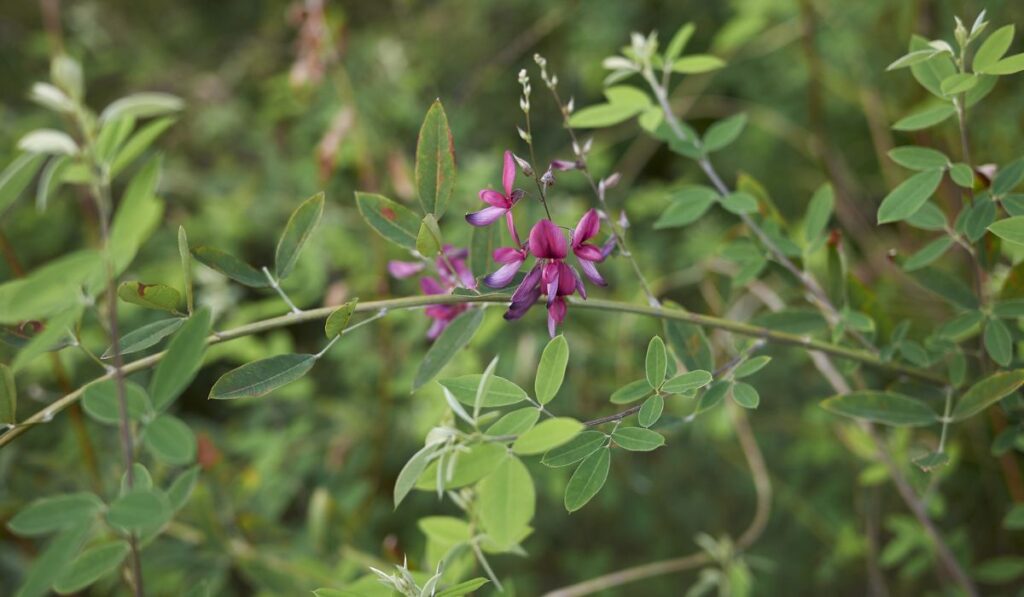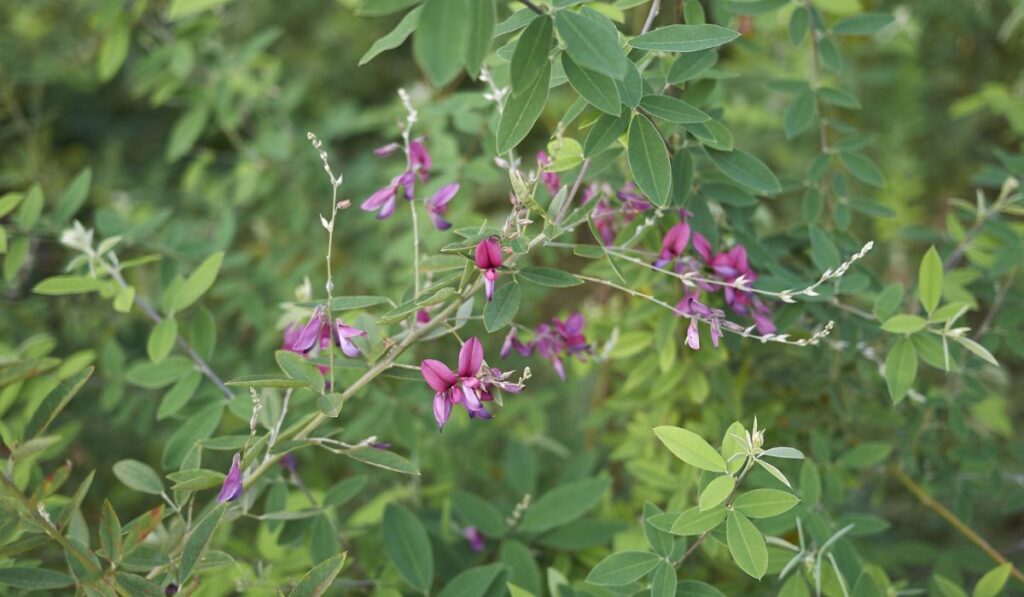Korean lespedeza, or Korean clover, made its way to the United States in the early 1900s. It was introduced as a forage crop and quickly became popular because of its ability to prosper in a wide range of climates. Today, Korean lespedeza is planted throughout the midwest and eastern states for both forage and erosion control. So, when’s the best time of year to plant Korean lespedeza?
Korean lespedeza is planted in early spring when the ground is still frozen. It helps tiny seeds seep into the ground with each freeze and thaw cycle, ensuring good seed-to-soil contact. The seed only germinates when the temperature is well above freezing, so there’s no risk of frost damage.
If you’re looking for a livestock grazing crop that can survive with minimal care, Korean lespedeza is an excellent choice. Few other forage crops offer the same benefits with such little effort. Let’s find out what makes it so special and how you can take advantage of it.
What Is Korean Lespedeza?

Korean lespedeza is a nitrogen-fixing, annual legume grown for forage, hay, or silage. It is also used as a green manure crop and for erosion control on slopes.
Lespedeza is a warm-season annual legume adapted to a wide range of soils and growing conditions, including acidic soils. It’s tolerant to drought and can be grown on sites with limited water and nutrient availability.
In appearance, Korean lespedeza (on Amazon) is a low-growing plant with slender, erect stems that can reach up to 1.5 feet in height in favorable conditions. The leaves are small and oval-shaped, with a coarse texture. The plant produces small, purple flowers at the ends of the stems. The flowers eventually give way to small, black seeds in slender, curved pods.
The biggest advantage of Korean lespedeza is its ability to quickly establish itself and produce a large amount of forage in a short period. Usually, the seed is broadcasted before the last expected frost in spring.
The growth starts near the end of April, and the plants will be ready for their first grazing by early June. Cutting the upper stems encourages horizontal branching, which results in a more compact plant and a higher yield of forage.
Where Does Korean Lespedeza Grow Best?
Korean lespedeza is adapted to a wide range of soils and growing conditions. It’s tolerant to drought and can be grown on sites with limited water and nutrient availability.
However, poor drainage is a major limitation to its growth. The plant does not tolerate flooded or saturated soils and will quickly die if the roots are submerged for more than a few days.
In the United States, lespedeza is commonly grown on marginal lands that are too droughty or erodible for other crops. Missouri, Eastern parts of Kansas, Arkansas, Oklahoma, and Tennessee have the majority of lespedeza acreage.
Apart from the pasturelands, it’s also used for controlling soil erosion or replenishing the nitrogen levels in poor-quality soils.
Despite its wide adaptability, Korean lespedeza should not be grown as an alternative to other forage legumes such as alfalfa, clover, or trefoil.
These legumes are more productive and persistent under good management practices. Korean lespedeza should be considered a forage crop for marginal lands where these other legumes will not perform well.
How Much Maintenance Does Korean Lespedeza Require?

Korean lespedeza is virtually maintenance-free once it’s established. It can be managed as a pasture, hayfield, or just a forage crop, with minimal inputs. Here’s what you need to know about maintaining a Korean lespedeza field:
- Korean lespedeza is sown in January when the ground is still frozen. The seed is broadcasted on the field and then harrowed to ensure good seed-to-soil contact. You may not need additional tilling if the field is in good condition.
- You don’t have to worry about frost damage to early growth because the seeds will only start germinating when the soil temperature consistently remains above 68℉.
- The plants will be ready for their first grazing in early June. At this time, the plants will be 4-5 inches tall. If grazed or mowed at this point, the plants start a lateral growth into thick bush, which saves them from close grazing in the future.
- Lespedeza is fairly resistant to pests and diseases, so you don’t have to worry about that. It can survive on summer rains, but if the rains are scant, you may have to provide irrigation.
- Lespedeza can outcompete weeds when planted with companion grasses, like Timothy, orchard grass, and fescue. Plus, the other grasses can provide forage when the lespedeza is not actively growing.
- You don’t need to provide any supplement or fertilizer to the plants because they can fix the atmospheric nitrogen in the soil. However, lime treatment has shown good results in terms of forage quality and yield. Still, it’s an option — not a necessity.
- The only maintenance required is to reseed the field every year. Though Korean laspedezas grow exponentially, a small portion of the field is lost to grazing, winterkill, and senescence every season. This can be compensated by reseeding in the middle of the growing season or the new seeding in early spring.
Is Korean Lezpedeza Good for Livestock?
Korean lespedeza is an excellent forage crop for both cattle and small ruminants. The high protein and digestibility of the leaves make it a valuable feed for livestock. It’s often used as a pasture or hay crop for cattle, horses, sheep, and goats.
It’s also good for wildlife, providing food and cover for deer, turkey, quail, rabbits, and other small animals. However, milk-producing cows don’t do well when Korean lespedeza is the sole forage.
The green leaves and stem of the plant provide much-needed protein, fiber, vitamins, and minerals during the summer months when other forages are scarce.
However, it’s not a great option for making hay because the high moisture content is difficult to cure and quickly loses nutrient value.
